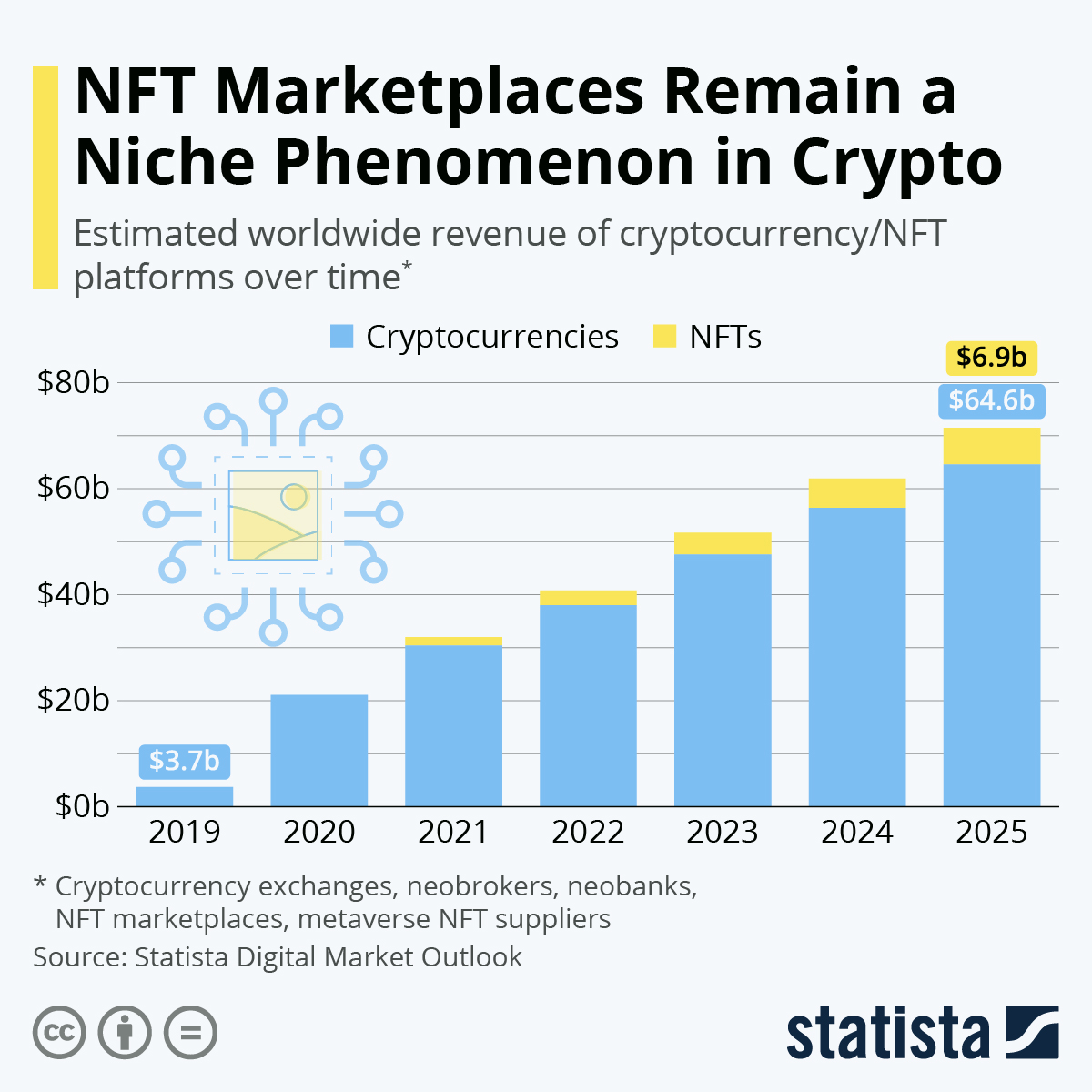Analyzing the Market Dynamics of NFTs in 2025
The landscape of Non-Fungible Tokens (NFTs) has undergone significant transformation since their inception. Once viewed as a niche segment of the cryptocurrency ecosystem, NFTs have expanded into mainstream industries, including art, entertainment, gaming, and real estate.
Understanding the market dynamics of NFTs in 2025 requires a deep dive into their evolving roles, technological advancements, and shifting economic trends.
The Evolution of NFTs: From Collectibles to Functional Assets
NFTs initially gained attention as digital collectibles, often tied to digital art and unique assets. While this segment remains strong, their utility has expanded into broader applications, enhancing their market value and appeal. Key trends include:
Integration with Gaming
NFTs have revolutionized the gaming industry by enabling players to own and trade in-game assets. Blockchain-based games now incorporate NFTs to ensure digital scarcity and player autonomy, creating new economic models for gaming companies and players alike.
Virtual Real Estate
Metaverse platforms such as Decentraland and The Sandbox have demonstrated the potential of virtual land ownership. NFT-based real estate transactions provide buyers with provable ownership and lucrative investment opportunities within the digital realm.
Brand Collaboration
Major brands are partnering with NFT creators to launch exclusive collections. For example, fashion brands use NFTs to provide authenticated digital versions of their products, blending physical and digital ownership.
Intellectual Property Rights
NFTs have introduced a new way for creators to monetize their intellectual property. By embedding royalties into smart contracts, artists and developers continue to earn revenue each time their NFT changes hands.
These developments indicate that NFTs are no longer confined to speculative buying; they are integral to digital economies and communities.
Economic Drivers and Challenges of the NFT Market
The NFT market is shaped by several economic drivers that sustain its growth. However, challenges remain, influencing its trajectory.
Key Drivers:
- Blockchain Interoperability: The rise of multi-chain NFT platforms has broadened the market, allowing users to mint, trade, and transfer NFTs across different blockchain networks.
- Institutional Adoption: Companies and institutional investors are exploring NFTs as new investment vehicles, signaling confidence in their long-term potential.
- Community Engagement: NFTs create strong community ties by enabling creators to engage directly with their audiences. For instance, exclusive NFT drops and memberships incentivize loyalty and participation.
Challenges:
- Regulatory Uncertainty: Governments worldwide are developing policies to regulate NFT transactions. Unclear taxation and intellectual property rules could stifle innovation.
- Environmental Concerns: The high energy consumption of some blockchain networks has led to criticism. However, newer blockchains like Solana and Polygon offer eco-friendly alternatives.
- Market Volatility: NFT prices are subject to speculative forces, which can deter risk-averse investors and create unpredictability for creators.
Mitigating these challenges requires strategic adaptation by market participants, emphasizing transparency, sustainability, and education.
Technological Innovations Shaping NFTs in 2025
The rapid pace of innovation in blockchain and associated technologies continues to redefine NFTs. Some of the most impactful technological trends include:
Layer-2 Scaling Solutions
Platforms like Optimism and Arbitrum reduce transaction costs and improve scalability for NFTs, making them accessible to a broader audience.
Dynamic NFTs
These are tokens that can change properties over time or based on specific triggers. Dynamic NFTs are finding applications in gaming, sports, and interactive storytelling.
AI-Generated NFTs:
Artificial intelligence is increasingly being used to create generative art and personalized NFT collections. These unique creations resonate with collectors seeking novel experiences.
Tokenization of Real-World Assets
Real estate deeds, luxury goods, and even intellectual property are being tokenized as NFTs. This expands their use cases beyond digital environments, integrating them with tangible assets.
Enhanced Security
Advances in blockchain technology are addressing issues like forgery and unauthorized duplication, ensuring the authenticity of NFTs.
These innovations underscore the adaptability of the NFT ecosystem and its potential to redefine asset ownership and digital interactions.
The Future of NFT Marketplaces and Industries
NFT marketplaces are central to the ecosystem, serving as hubs for trading, minting, and showcasing tokens. Their evolution will dictate the trajectory of the broader NFT market in 2025 and beyond.
Specialized Marketplaces
Instead of one-size-fits-all platforms, niche marketplaces are emerging to cater to specific audiences. For instance, platforms dedicated to sports memorabilia or virtual real estate ensure tailored user experiences.
Decentralized Platforms
Decentralized marketplaces prioritize user control and lower fees. By eliminating intermediaries, they empower creators and traders while reducing costs.
Industry-Specific Growth:
- Art and Entertainment: NFTs are reshaping creative industries by enabling artists to bypass traditional gatekeepers. Musicians, filmmakers, and visual artists can directly monetize their work and establish closer ties with fans.
- Education and Certification: Universities and institutions are using NFTs for credentialing, providing verifiable digital certificates that prevent fraud.
- Healthcare: The healthcare sector is exploring NFTs for managing patient data securely and streamlining administrative processes.
As marketplaces and industries align with consumer needs and technological advancements, their adoption will likely accelerate.
Conclusion
NFTs in 2025 stand at a crossroads of innovation and integration, bridging digital and real-world economies. By analyzing market dynamics—from their evolution and economic drivers to technological advancements and industry-specific applications—it is evident that NFTs are redefining asset ownership, creativity, and community engagement. The journey ahead will depend on navigating regulatory landscapes, embracing sustainability, and fostering inclusivity.
References
- The Rise of NFTs in Gaming
- NFTs and Intellectual Property
- Blockchain Interoperability Trends
- How Virtual Real Estate is Changing
- Sustainability in Blockchain
- Dynamic NFTs Explained
- AI's Role in NFT Creation
- Tokenization of Real-World Assets
- Decentralized Marketplaces
- NFTs in Healthcare



















![[ℕ𝕖𝕧𝕖𝕣] 𝕊𝕖𝕝𝕝 𝕐𝕠𝕦𝕣 𝔹𝕚𝕥𝕔𝕠𝕚𝕟 - Is Trump Dying? Or Only Killing The Market?](https://cdn.bulbapp.io/frontend/images/a129e75e-4fa1-46cc-80b6-04e638877e46/1)










![[LIVE] Engage2Earn: Dutton = MAGA](https://cdn.bulbapp.io/frontend/images/e12661b2-74fa-4cd8-b554-51be7f6fec4f/1)






















